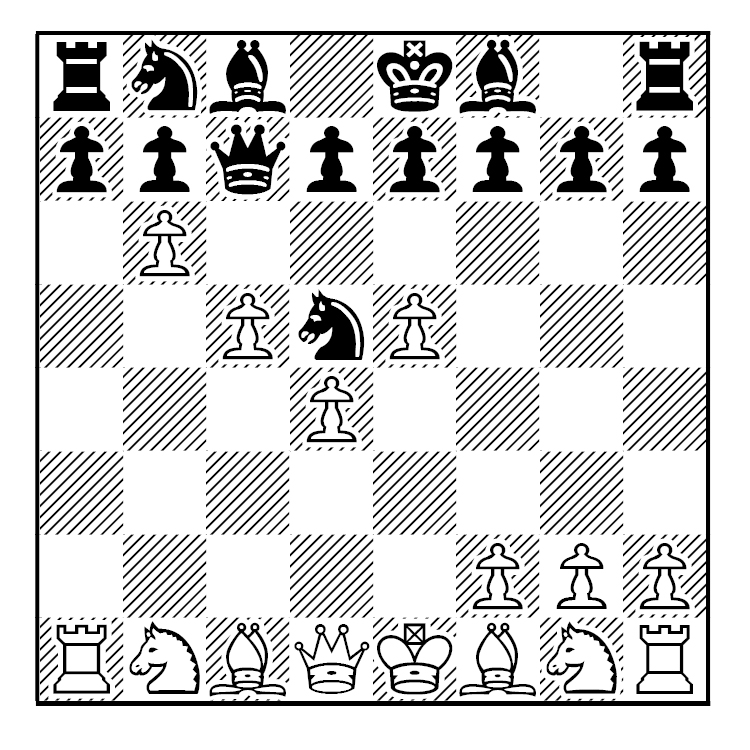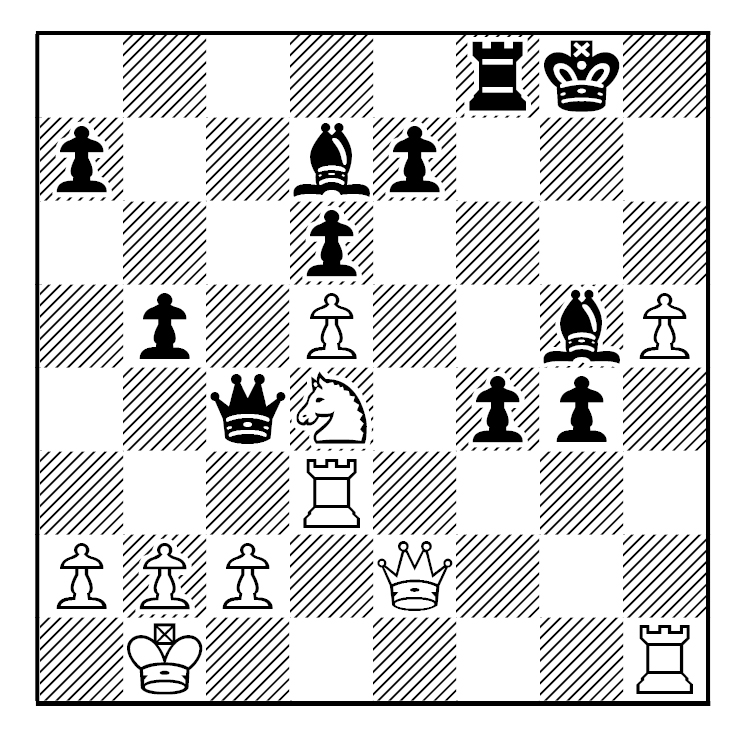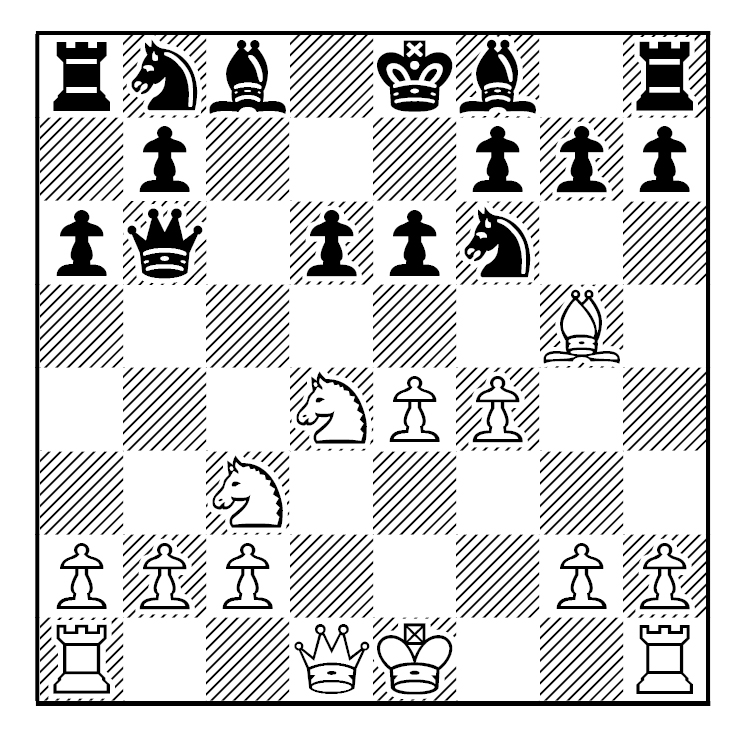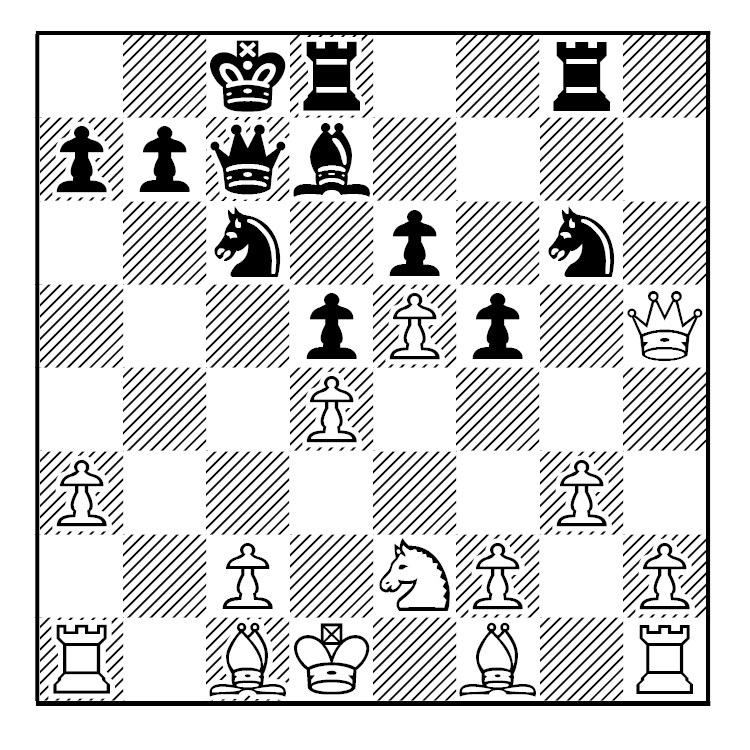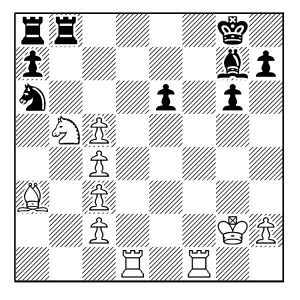Most of you know how to win a Queen versus a single pawn in the endgame. Some of you may also know how to do the same if your opponent has, not one, but two pawns in the endgame.
White to Play and Win
[Berger, 1922]

1.Qg8+ Kf2 (1…Kh1 2.Qg3 a3 3.Qf2 a2 4.Qf1#) 2.Qh7 Kg3 3.Qg6+ Kf2 4.Qe4 Kg3 (4…a3 5.Qh1 ; 4…Kg1 5.Qg4+ Kf2 6.Qh3 Kg1 7.Qg3+ Kh1 8.Qf2 +-) 5.Kc5 (5.Qh1 +-) 5…a3 6.Kd4 a2 7.Qh1 a1=Q+ 8.Qxa1 Kg2 9.Qb2+ Kg1 (9…Kg3 10.Qb7 +-) 10.Ke3 h1=Q 11.Qf2mate
And a few of you may know what to do if your opponent has these two pawns connected.
Rahman (2269)-Haque (2206)
United Insurance
Dhaka, 2007
1.Nf3 d6 2.g3 e5 3.c4 Bg4 4.Bg2 c6 5.Nc3 Nf6 6.d3 Nbd7 7.h3 Bh5 8.Nh4 Be7 9.O-O O-O 10.Rb1 a5 11.a3 Re8 12.b4 axb4 13.axb4 Bf8 14.b5 Qc7 15.Be3 Ra3 16.Rb3 Rea8 17.Qc2 d5 18.bxc6 bxc6 19.Bc1 Rxb3 20.Qxb3 d4 21.g4 Nc5 22.Qc2 dxc3 23.gxh5 Nxh5 24.Qxc3 Ra2 25.Be3 Ne6 26.Qb3 Ra3 27.Qb2 Nhf4 28.Rb1 Qa5 29.c5 Qc3 30.Qb8 Nxe2+ 31.Kh2 Ra1 32.Rb3 Qe1 33.Nf3 Qd1 34.Qxe5 Qxb3 35.Qxa1 Qxd3 36.Bf1 Qc3 37.Qa4 N2f4 38.Qxc6 Ng6 39.Qd5 Bxc5 40.Bxc5 Qxc5 41.Qxc5 Nxc5 42.Bc4 Ne4 43.Kg1 Kf8 44.Bd3 Nc5 45.Bc2 Nf4 46.Kh2 h6 47.Nd4 g6 48.Kg3 Nce6 49.Nc6 Ne2+ 50.Kg2 N2d4 51.Nxd4 Nxd4 52.Be4 f5 53.Bd3 g5 54.h4 Kg7 55.Kg3 g4 56.Kf4 Kf6 57.Bc4 Ne6+ 58.Kg3 Ke5 59.f3 h5 60.fxg4 hxg4 61.h5 Nf4 62.h6 Nh5+ 63.Kh4 Nf6 64.Bd3 Kf4 65.Bb5 Ke3 66.Kg5 g3 67.Bf1 f4 68.Kxf6 f3 69.h7 Kf2 70.h8=Q Kxf1
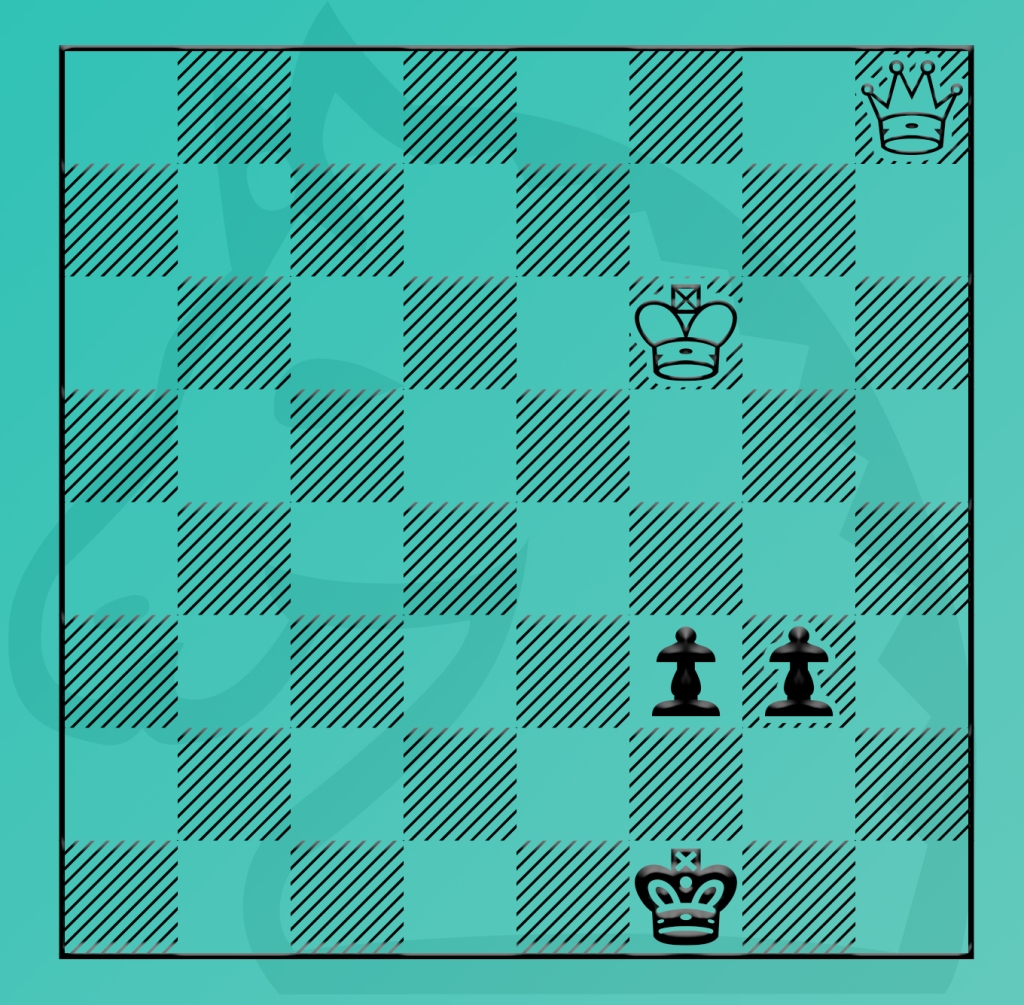
71.Qh3+ Kf2 72.Qh4 Kg2 73.Qe4 Kf2 74.Qc2+ Kf1 75.Qd3+ Kf2 76.Qd2+ Kf1 77.Qe3 Kg2 78.Qe4 Kf2 79.Qh4 Kg2 80.Qe4 Kf2 81.Kf5 g2 82.Kf4 g1=Q 83.Qc2+ Kf1 84.Qd1+ Kf2 85.Qd2+ Kf1 86.Kxf3 Qh1+ 87.Kg3 Qg1+ 1/2-1/2
(Well, maybe it’s not a win in all cases!)
But I assume no one has faced, with his sole queen, an endgame where your opponent has three pawns, all connected. It is extremely rare endgame and not too much research has been done on it.
Nevertheless, we can adopt some strategies and good ideas from other endings.
1) Do not expect an easy ending. While it is true that a queen versus three connected pawns has the advantage, maybe even a winning one, it does not always mean the victory will be an easy one.
2) Stalemates and draws are possible, and sometimes unavoidable. Still this is better than losing.
3) The win for the single Queen side is much easier when the pawns are not passed the fourth rank. The win, if still possible, is much harder when pawns are on the fifth to the seventh rank.
4) Keep, or get, your queen to position herself in front of the pawns.
5) Try to get your king close to the pawns. He can always pick up the stragglers.
6) The corollary of the above strategy is to keep the enemy king away from his own pawns. He can protect them or use his pawns to block a check.
7) If you are going to check, make sure your check moves the enemy king away from his pawn or your queen closer to the front of the pawns.
8) Assuming everything else is equal, try to win the middle pawn first. That way, the remaining pawns are now isolated.
Here, Black has is ready to promote. White uses a staircase sequence to get his queen in front of the pawns. Note that all three pawns are on or past the fourth rank.
Ziatdinov (2467)-Blatny (2563)
World Open, 2003
[B06]
1.e4 g6 2.d4 c6 3.Nf3 Bg7 4.Nbd2 d5 5.c3 a5 6.Bd3 Na6 (Other moves in this crazy opening are 6…Nh6 and 6…e6.) 7.O-O Nc7 8.Re1 e6 9.Nf1 Ne7 10.h4 h6 11.Ng3 b6 12.Bf4 Ba6 13.Bxa6 Rxa6 14.Be5 O-O 15.Bxg7 Kxg7 16.Qd2 Ne8 17.Rad1 Ra7 18.Ne5 Nf6 19.h5 gxh5 20.Qe2 dxe4 21.c4 Qe8 22.Nxe4 Nxe4 23.Qxe4 f5 24.Qf3 Kh7 25.Nd3 Ng6 26.Qxh5 Rd7 27.Re3 Qf7 28.Rh3 Qg7 29.Rg3 Rxd4 30.Nf4 Rxf4 31.Rxg6 Qxg6 32.Rd7+ Qg7 33.Rxg7+ Kxg7 34.Qh2 e5 35.Qg3+ Kf6 36.Qe3 Rxc4 37.Qxh6+ Kf7 38.Qh7+ Ke6 39.Qg6+ Kd5 40.Qg7 Rd8 41.Qf7+ Kd4 42.Qxf5 Rd5 43.Qf3 Kc5 44.Qe3+ Rcd4 45.g4 Kb5 46.Qe2+ Rd3 47.Kf1 Kc5 48.g5 e4 49.Qxe4 Rd1+ 50.Ke2 R1d2+ 51.Ke3 Rxb2 52.g6 Rb4 53.Qe7+ Kb5 54.f3 Rb1 55.Kf4 a4 56.Qe3 Rb2 57.Kg3 Rdd2 58.Qe5+ Kb4 59.Qxb2+ Rxb2 60.g7 Rb1 61.Kg2 Rb2+ 62.Kh3 Rxa2 63.g8=Q Rc2 64.Qd8 b5 65.Qd1 Kb3 66.Qb1+ Kc3 67.f4 a3 68.f5 a2 69.Qa1+ Kb3 70.f6 Rd2 71.Kg3 c5 72.f7 Rd8 73.Kf4 Rf8 74.Qg7 Rxf7+ 75.Qxf7+ Kb2
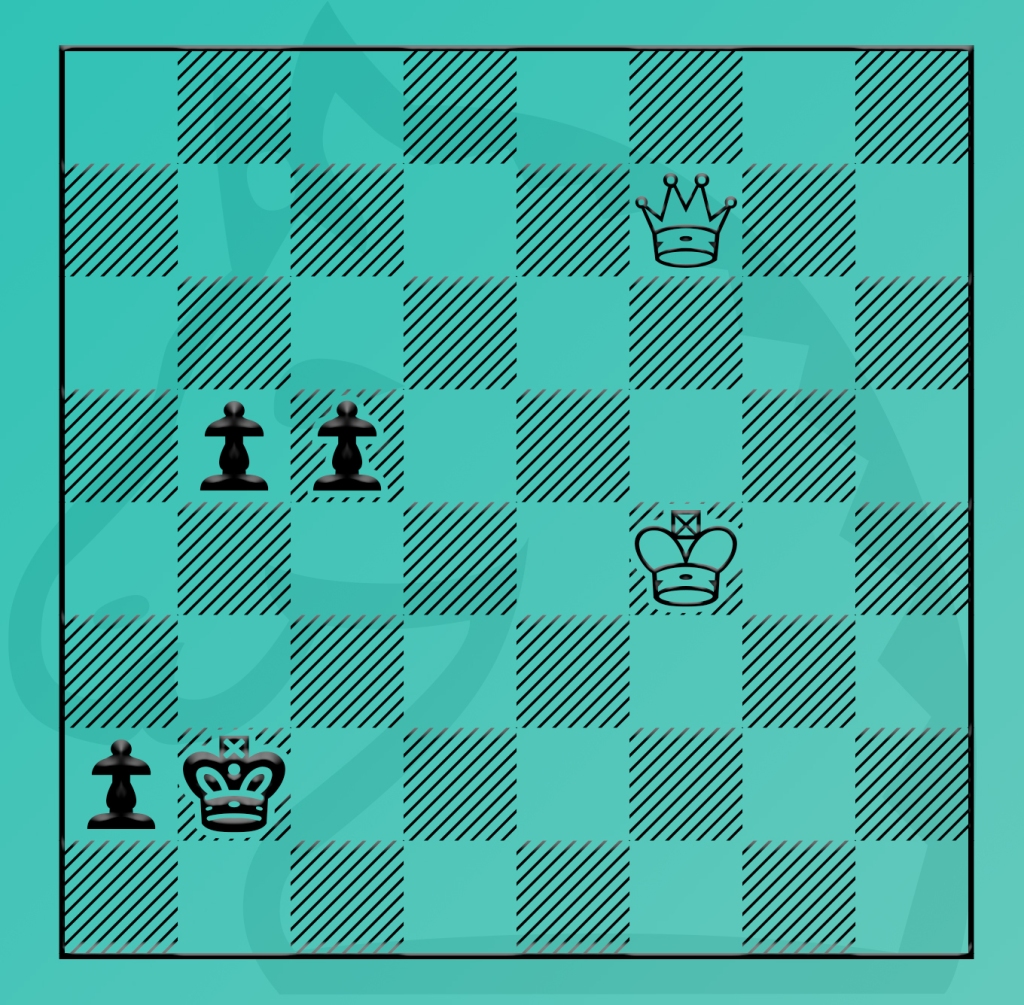
76.Qf6+ Kb1 77.Qf5+ Kb2 78.Qe5+ Kb1 79.Qe1+ Kb2 80.Qe2+ Kb1 81.Qxb5+ 1/2-1/2
Black’s pawns are too far advanced for White to win. But Black is also in a bind, which means he can’t win either.
Gilg-Lamprecht
Karbitz, Aug. 18 1924

68…f1=Q! 69.Qxf1 h1=Q! 70.Qxh1=
And what is the result if all three pawns are on the seventh rank? The one with the Queen has to be careful, and lucky!
White to Play and Draw
[Becker]

1.Qh3 d1=Q (1…f1=Q 2.Qh4+ Qf2 3.Qh1+ Qf1 4.Qh4+ Kd1 5.Qa4+ =; 1…d1=N 2.Qg3 Ne3 3.Qxe3 f1=Q 4.Qc1+ Kf2 5.Qf4+ =) 2.Qc3+ Qd2 3.Qa1+ Qd1 4.Qc3+ Kf1 5.Qh3+ =

